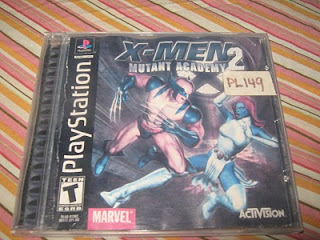
Let me tell you another story of my gaming childhood. If you were around in the fourth console generation era, then you would know that the Power Rangers were very popular back then. Unsurprisingly, they had a few games based on them. There was one I remember playing for the Super Nintendo that was pretty good, and all my friends seemed to like it too. However, it was rented and I didn’t have the ability to purchase it at the time. Flash forward over a decade later when I decide to finally get a Sega Genesis with opportunity to get a game by the same title for just 4$ at the same time. Thinking it was the same game, I couldn’t pass it up. It wasn’t the same game. At all. This is Mighty Morphin Power Rangers FOR THE SEGA GENESIS!
Now, the plot is where I’m going to go easy on this game, because if I run my mouth off too much, someone will say the Power Rangers are why it fails. The basic story line of the arcade mode is that Rita Repulsa is trying to destroy the Power Rangers by sending monsters after them. That’s alright, but my problem is the way it’s presented: it’s far too quickly paced; a monster comes, you beat it, Rita makes it grow, you beat it, next. This especially annoys me when you fight the Green Ranger, because that story had a lot to offer, but all that is never even TOUCHED on. Also, the way it’s presented is terrible; everyone in (what I am graciously calling) the cut-scenes looks like they’re cardboard and most of the scenes are reused to an annoying amount. And remember, this is me going easy on this game.
You know how normally, when I review 2D fighters, I say how I don’t like them, yet every time I’ve reviewed them, it’s been alright? Well, this is an example of one that I don’t like, and I think it illustrates why. First off, there is nothing original about this one: characters are all licenced from the Power Rangers while the fighting system is as basic as you can get. It’s pretty much just cut and pasted from the standard Fighting game format where all you have to do is “insert characters here” and make up some random button combinations for moves. The second problem with the game play is that everything seems to be slow. Moving your character feels stiff and I think there’s a delay in the button response. It definitely takes away from the fact that this is based on a show known for karate action. I actually think I can win more battles by tossing the controller around, then trying to play.
If you’re thinking the last redeemable aspect of this game might be its audio/visuals, then you’re sadly mistaking. As I’ve already mentioned, the cut scenes look like they are made with cardboard. Adding to that, any image taken from the show looks like it had a layer of feces smeared on it. The game made sprites suck too. The Power Rangers look… inhuman, like they’re flat or missing detail. The monsters, however, have the opposite problem: they are overly detailed, which clashes with the rangers (mind the pun). The Megazord also clashes since it’s done in a cartoon style, which is honestly the best looking sprite in the game (except for a tiny sword). Also; the cut-scenes, game over screen an actual game all look like they’re from completely different sources. At least pick ONE crappy look and stick with it!
The sound isn’t at all better either. Everything seems somewhat Atari quality. The voices should have been left out since it’s obvious they couldn’t be properly converted. Each note of the music tends to ring out with its own mix of mediocrity and disappointment. None of it makes me want to fight harder: it makes me want to turn off the volume. The worst offense is what they did to the theme song. Remember how awesome this was: *theme song plays*? Right, listen to this crap: *Genesis version plays*. It’s despicable.
Right, let me just finish this now, cause I don’t want to talk about this game much longer. The story is uninspired and rushed, the look is consistent only in crappiness, the sound is broken, the controls are stiff and the AI is cheap. God, even the game label art is horrible; off centered, poorly chosen and boring. (You really should look it up and see how bad it is.) A game like Xiaolin Showdown can be boring and unoriginal, but get a pass if it’s not flawed, because that’s what separates a good game from a bad game to me. This is flawed. I think if I had played this game instead of the SNES one as a kid, I would have given up on the Power Rangers long before Turbo. Congratulations Banpresto, you’re the developers of the first game I give a failing score to. I give Mighty Morphin Power Rangers for the Sega Genesis 4 levels out of 10.
















